Guides
Toilet Types, Brands & Materials: A Guide to Toilet Weights
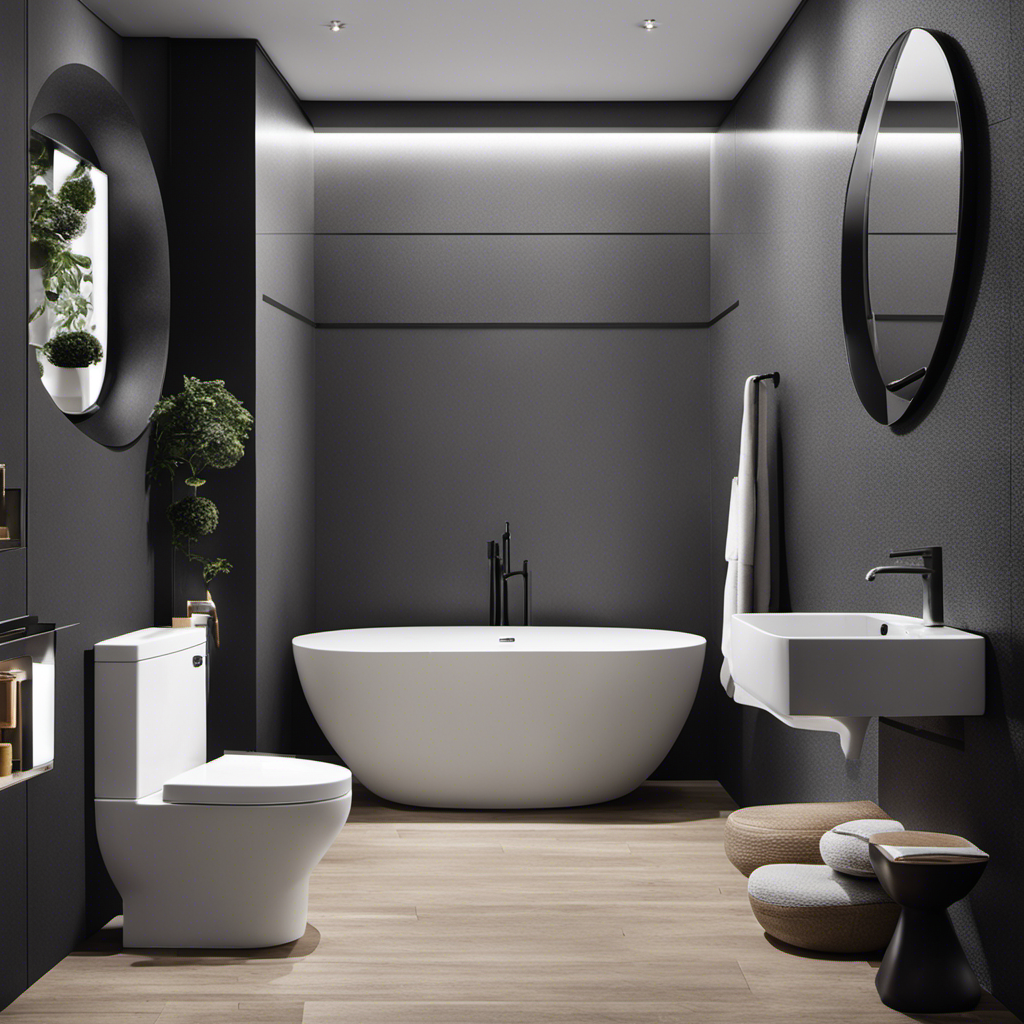
As I dive into the world of toilets, I find myself pondering the weighty matter of toilet weights.
In this comprehensive guide, I will explore the various aspects of toilet types, brands, and materials, shedding light on the factors that contribute to their weight.
From the sturdy one-piece toilets weighing around 100 pounds to the lighter two-piece options at approximately 50 pounds, we will uncover the secrets behind different toilet weights.
So, let’s flush out the details and dive into the fascinating world of toilet weights.
Key Takeaways
- Toilet weights can vary depending on the type, with one-piece toilets weighing around 100 pounds and two-piece toilets weighing roughly 50 pounds (bowl or tank).
- Different brands and models of toilets can have varying weights, with examples like the American Standard Champion 4 weighing 119 lbs and the TOTO Ultramax II weighing 99 lbs.
- Porcelain, particularly vitreous china, is the primary material used in toilet manufacturing due to its strength, durability, and long-lasting properties.
- The size, design, and installation method of toilets can also affect their weight, with factors such as comfort height, compactness, and tank size influencing the overall weight.
The Weight Difference: One-Piece Vs. Two-Piece Toilets
I prefer two-piece toilets because they are lighter and easier to lift and install compared to one-piece toilets.
Two-piece toilets have a separate bowl and tank, which makes them significantly lighter, weighing approximately 50 pounds for either the bowl or the tank. This weight advantage offers several benefits.
Firstly, it makes transportation and installation much simpler, especially in situations where maneuvering heavy objects is challenging. Secondly, the lighter weight reduces the risk of injury during the installation process.
However, there are also disadvantages to consider. Two-piece toilets have more crevices and joints compared to one-piece toilets, which can potentially lead to increased maintenance and cleaning efforts. Additionally, the additional parts of a two-piece toilet may require more frequent replacement compared to a one-piece toilet.
Despite these disadvantages, the advantages of lighter weight and ease of installation make two-piece toilets a popular choice for many homeowners.
Exploring Brand and Model Variations in Toilet Weights
The weight of different toilets can vary depending on the brand and model. When comparing weight variations among popular toilet brands, it is important to consider how toilet weight impacts installation and transportation.
Brand and model variations play a significant role in determining the weight of a toilet. For example, the American Standard Champion 4 one-piece toilet weighs 119 lbs, while the TOTO Ultramax II one-piece weighs 99 lbs. These differences in weight can affect the ease of installation and transportation.
Heavier toilets may require more effort and assistance during installation, while lighter toilets are generally easier to handle. Additionally, transporting heavier toilets can be more challenging and may require specialized equipment.
Therefore, understanding the weight variations among popular toilet brands is crucial when considering installation and transportation logistics.
The Role of Material and Manufacturing in Toilet Weight
Porcelain toilets, commonly used in manufacturing, are known for their strength and durability. The material used in toilet manufacturing has a significant impact on the weight of the toilet.
Porcelain, specifically vitreous china, is a popular material for high-quality toilets. It is strong, durable, and long-lasting. Leading brands utilize porcelain in their manufacturing processes to ensure the toilet’s durability.
Porcelain toilets are made using clay, which is molded and fired at high temperatures to create a solid and sturdy structure. The manufacturing processes also play a role in determining the weight of the toilet.
The design and size of the toilet, as well as the installation method, can affect its weight. Additionally, the inclusion of advanced features in smart toilets, such as bidets and heated seats, adds extra weight to the unit.
Overall, the choice of materials and the manufacturing processes employed significantly influence the weight of a toilet.
Size, Design, and Installation: Factors Affecting Toilet Weight
When considering toilet weight, factors such as size, design, and installation method all play a role in determining the overall weight distribution of a toilet. The size of a toilet can greatly impact its weight, with larger toilets generally weighing more than smaller ones. The design of a toilet, including features such as comfort height or wall-hung toilets, can also affect its weight. Additionally, the installation method can influence the weight distribution of a toilet, with certain methods requiring more support and therefore adding more weight to the overall unit. To better understand the factors influencing toilet weight distribution, refer to the table below:
| Factors | Influence on Toilet Weight Distribution |
|---|---|
| Size | Larger toilets tend to be heavier |
| Design | Features like comfort height add weight |
| Installation Method | Certain methods require more support and add weight |
Smart Toilets and Advanced Features: How They Impact Weight
I find that smart toilets with advanced features tend to be heavier due to the technology incorporated into them. The weight distribution in toilets is affected by the additional components added to smart toilet technology.
These toilets often include features such as bidets, heated seats, water sprays, and odor sprays, which contribute to their increased weight. For example, the Kohler Veil intelligent toilet weighs 110 lbs, while the TOTO 700H weighs 123 lbs. The added technology and functionality make these smart toilets heavier than traditional models.
It is important to consider this weight when installing a smart toilet, as it may require additional support or reinforcement. Despite their weight, smart toilets offer additional features and convenience, making them a popular choice for those seeking a high-tech bathroom experience.
The Pros and Cons of Heavy and Light Toilet Options
Installing a heavy toilet may require additional reinforcement, but it can provide stability and durability in the long run. When considering the installation of a heavy toilet, it is important to take into account the weight distribution and stability of the bathroom floor.
The added weight of a heavy toilet can put stress on the floor, especially if it is not properly supported. This can lead to cracks or even structural damage over time. Additionally, the installation of a heavy toilet may require additional support, such as floor joists or subfloor reinforcement, which can increase the overall installation costs.
It is essential to consult with a professional plumber or contractor to ensure that the necessary measures are taken to support the weight of a heavy toilet properly.
Choosing the Right Toilet Weight: Factors to Consider
Considering the weight of a toilet is important when choosing the right one for your bathroom. There are several factors to consider when determining the ideal toilet weight.
One of the main factors is the impact of advanced features on toilet weight. Smart toilets, for example, may be compact but are still heavy due to their advanced features such as bidets, heated seats, water sprays, and odor sprays. The technology in these smart toilets adds weight to the unit.
Additionally, the size, design, and installation of the toilet can also affect its weight. Comfort height toilets, which are taller and heavier than standard height toilets, and wall-hung toilets, which are light but complicated to install, are examples of how different designs and installation methods can impact toilet weight.
Frequently Asked Questions
Are There Any Toilets Made of Materials Other Than Porcelain?
Yes, there are toilets made of materials other than porcelain. Non-porcelain toilets, such as those made of stainless steel or plastic, offer advantages like durability and ease of cleaning, but may lack the aesthetic appeal of porcelain.
Can the Weight of a Toilet Affect Its Water Consumption or Flushing Power?
The weight of a toilet can affect its water consumption and flushing power. Heavier toilets may require more water to flush effectively, leading to increased water usage. Choosing a lighter toilet can help improve water efficiency.
Do Heavier Toilets Require Special Installation or Reinforcement in the Bathroom?
Heavier toilets may require special installation or reinforcement in the bathroom. The weight of a toilet can affect its water consumption and flushing power. It is important to consider these factors when choosing and installing a toilet.
Are There Any Lightweight Toilets That Still Offer Advanced Features Like Bidets or Heated Seats?
Yes, there are lightweight toilets available that offer advanced features like bidets and heated seats. These toilets are constructed using durable materials, such as porcelain and vitreous china, ensuring their longevity and functionality.
How Does the Weight of a Toilet Impact Its Durability and Lifespan?
The weight of a toilet can impact its durability and lifespan. A heavier toilet may be more durable and less likely to require plumbing maintenance. However, it can also have a higher environmental impact.
Conclusion
In conclusion, the world of toilet weights is a fascinating and crucial aspect to consider when choosing the perfect fixture for your bathroom.
From the weighty one-piece toilets that can rival a sumo wrestler, to the lighter two-piece options that are as nimble as a gazelle, the variations are endless.
Brands and models offer their own unique spin on toilet designs, adding to the weighty decision-making process. Material and manufacturing play a vital role, with porcelain reigning supreme for its strength and durability.
Size, design, and installation also contribute to toilet weight, catering to different needs and preferences. And let’s not forget the heavy-hitting smart toilets, packed with advanced features that will make your head spin.
So, when it comes to choosing the right toilet weight, consider all the factors and make an informed decision that will leave you feeling flush with satisfaction.
Liam’s journey with us started as a consumer. Having faced challenges while setting up his own modern bathroom, he delved deep into research.
Recognizing his knack for simplifying complex information and his authentic writing style, we were thrilled to welcome him aboard. Liam’s articles often merge practicality with style, ensuring readers find the perfect fit for their homes. Liam is an avid hiker off-duty and often jokes about finding the best “natural toilets” Mother Earth has to offer.
Guides
Can You Flush Toilet if Water Turned off

Do you find yourself in a state of panic because the water has been shut off and you urgently need to flush the toilet? Have no fear! We have the answer to your plumbing problem.
In this article, we’ll explore alternative methods for flushing toilets when the water is turned off. From using a bucket of water to utilizing a trash bag filled with water, we’ll guide you through emergency options that will keep your bathroom functioning smoothly even during water outages.
Prepare to master the art of flushing without water!
Key Takeaways
- Gravity-flush toilets do not rely on electricity or water pressure to function and will continue to work during a water outage as long as there’s water in the tank.
- Alternative methods for flushing toilets without water include using a bucket flush, greywater recycling, composting toilets, waterless urinals, and dual-flush toilets.
- Using a bucket of water can effectively maintain toilet hygiene during a water outage, and pouring the water quickly and forcefully into the toilet bowl creates enough pressure for a successful flush.
- In emergency situations with water outages, options for flushing toilets include using water from nearby sources like ponds or streams, stored rainwater or melted snow, clean swimming pool or hot tub water, portable or chemical toilets, or storing water in large containers for easy access.
Gravity-Flush Toilets and Water Outages
Our gravity-flush toilet’s functionality during water outages is essential for our household. Gravity-flush toilets operate by using the force of gravity to remove waste from the bowl. This makes them ideal for situations where water supply is limited or unavailable.
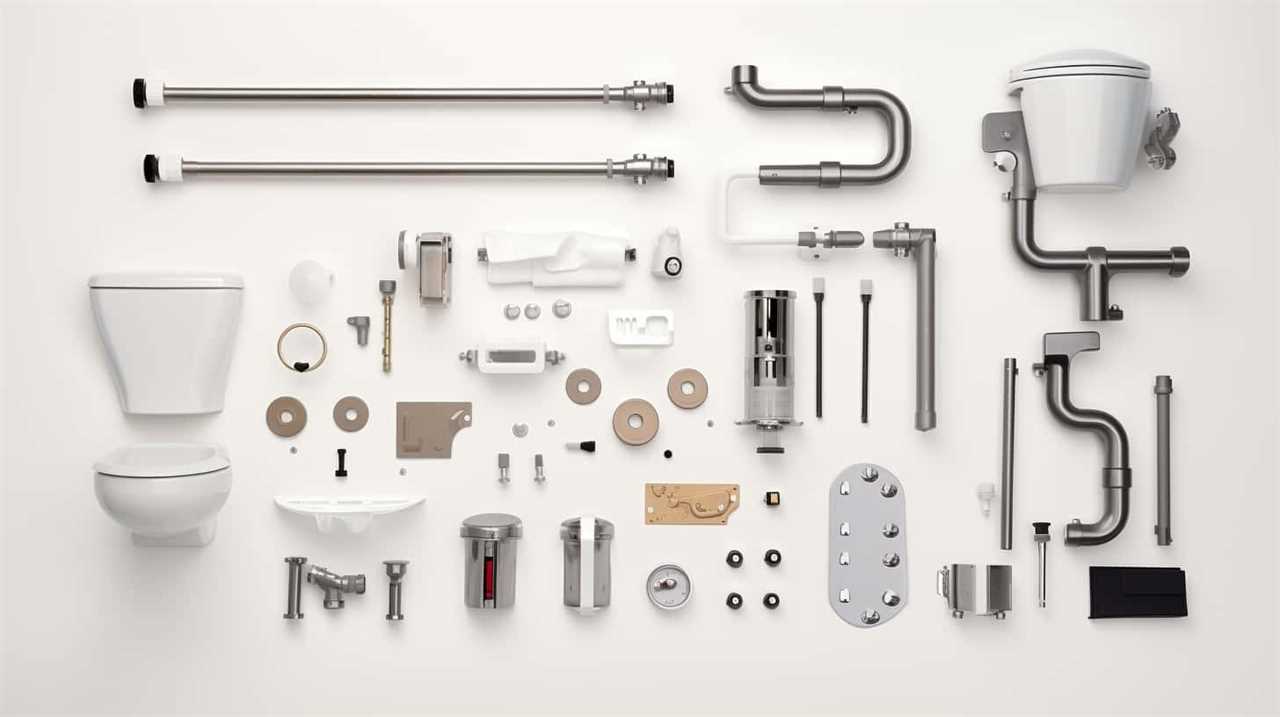
One of the benefits of a gravity-flush toilet is that it doesn’t rely on electricity or water pressure to function. This means that even during a water outage, the toilet will continue to work as long as there’s water in the tank.
To prepare for a water outage, it’s important to ensure that the toilet’s tank is filled with water. This can be done by filling a container with water and pouring it into the tank.
Alternative Methods for Flushing Toilets Without Water
To continue the discussion from the previous subtopic, let’s explore alternative methods we can use to flush toilets without water. When faced with a water outage or a desire to conserve water, there are a few toilet flushing alternatives and water-saving toilet options to consider:
- Bucket Flush: Fill a bucket with water from a nearby source and pour it directly into the toilet bowl. This will create the necessary force to flush waste away.
- Greywater Recycling: Install a greywater recycling system that diverts water from sinks, showers, and laundry to be used for toilet flushing. This sustainable solution reduces water usage without compromising sanitation.
- Composting Toilets: Consider using a composting toilet, which uses little to no water. These toilets break down waste into compost that can be safely used as fertilizer.
Using a Bucket of Water to Flush the Toilet
Let’s continue exploring alternative methods for flushing toilets without water by discussing the use of a bucket of water.

When faced with a water outage, using a bucket of water can be an effective solution to maintain toilet hygiene. Compared to a plunger, a bucket of water is generally more effective for flushing toilets without water. By pouring a bucket of water directly into the toilet bowl, the force of the water can help push waste down the drain. It’s important to pour the water quickly and forcefully to create enough pressure for a successful flush.
During a water outage, it’s crucial to conserve water. Some tips for conserving water include using the least amount of water necessary to flush, limiting other water usage, and considering alternative sanitation options if available.
Utilizing a Trash Bag Filled With Water as a Temporary Flush
We can use a single trash bag filled with water as a temporary solution for flushing the toilet when the water is turned off. This DIY toilet flushing method can be a lifesaver in emergency situations or during water shortages. Here are three reasons why this temporary flush solution is worth considering:
- Convenience: A trash bag filled with water can easily be obtained and stored, making it a convenient solution for flushing the toilet when there’s no running water available.
- Efficiency: By using a trash bag filled with water, you can quickly and effectively flush the toilet without the need for complicated setups or expensive equipment.
- Versatility: This temporary flush solution can be used in various scenarios, such as during camping trips, power outages, or when the water supply is disrupted due to repairs or natural disasters.
Emergency Options for Flushing Toilets During Water Outages
During a water outage, one of the emergency options for flushing toilets is by utilizing alternative water sources. It is important to maintain toilet hygiene and prevent toilet odors during water outages. Here are some emergency options for flushing toilets:
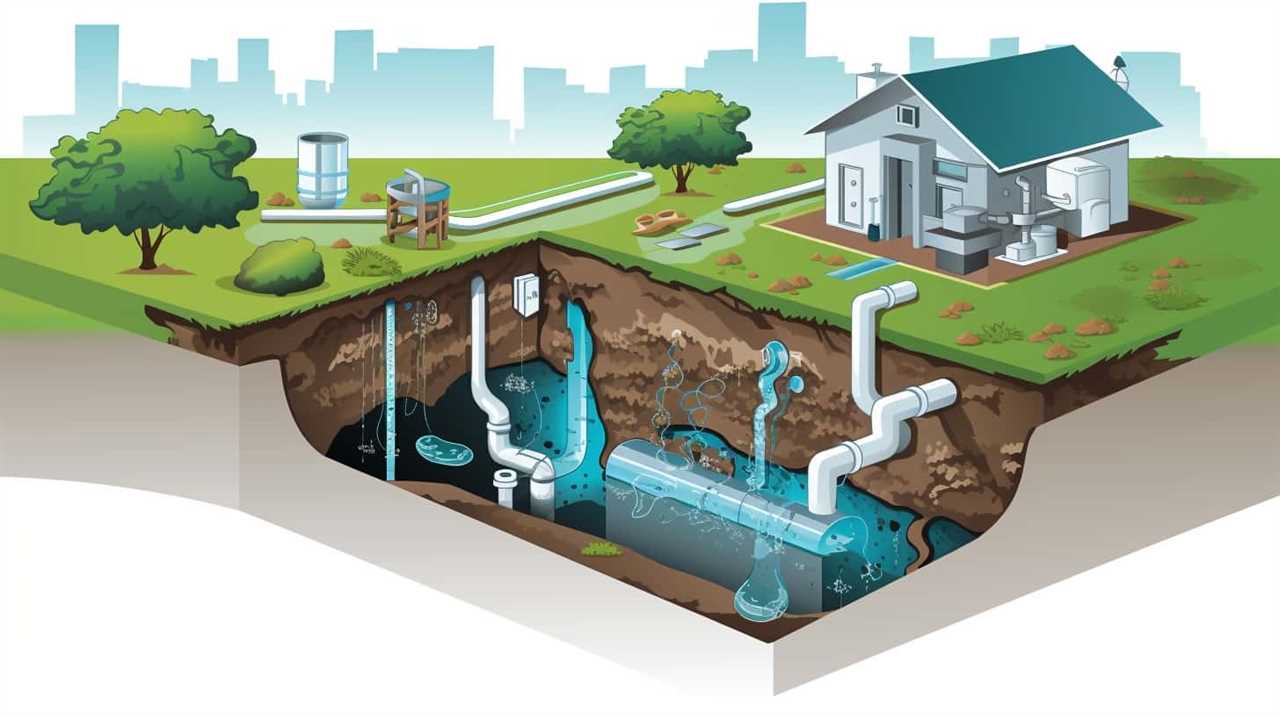
| Option | Description |
|---|---|
| Option 1 | Fill a bucket with water from a nearby pond or stream. Pour the water directly into the toilet bowl, aiming for the back of the bowl to create a forceful flush. Repeat if necessary. |
| Option 2 | Use stored rainwater or melted snow as an alternative water source for flushing. Collect and store water in large containers for easy access during emergencies. Use a cup or a small bucket to pour the water into the toilet bowl. |
| Option 3 | If available, use water from a swimming pool or hot tub. Ensure the water is clean and free from chemicals or contaminants. Use a bucket or a cup to pour the water into the toilet bowl, flushing it down. |
Frequently Asked Questions
Can I Use a Plunger to Flush the Toilet if the Water Is Turned Off?
Yes, we can use a plunger to flush the toilet if the water is turned off. It’s one of the alternative flushing methods and a DIY emergency toilet solution.
What Should I Do if I Don’t Have a Bucket Available to Flush the Toilet During a Water Outage?
If water is turned off, we must find alternative flushing methods. In the absence of a bucket, we can utilize DIY toilet flush solutions. These solutions will ensure efficient flushing during a water outage.
Is It Safe to Use Rainwater or Water From Other Sources to Flush the Toilet During a Water Outage?
Yes, it is safe to use rainwater or water from other sources to flush the toilet during a water outage. However, there are pros and cons to consider. Rainwater may be contaminated, while stored water may have limited supply.
Can I Use Bleach or Other Cleaning Agents in the Bucket of Water to Sanitize the Toilet Before Flushing?
Yes, you can use bleach or other cleaning agents in the bucket of water to sanitize the toilet before flushing. However, it is advisable to use vinegar instead of bleach as a safer alternative. Additionally, there are alternatives to using a plunger for flushing the toilet.
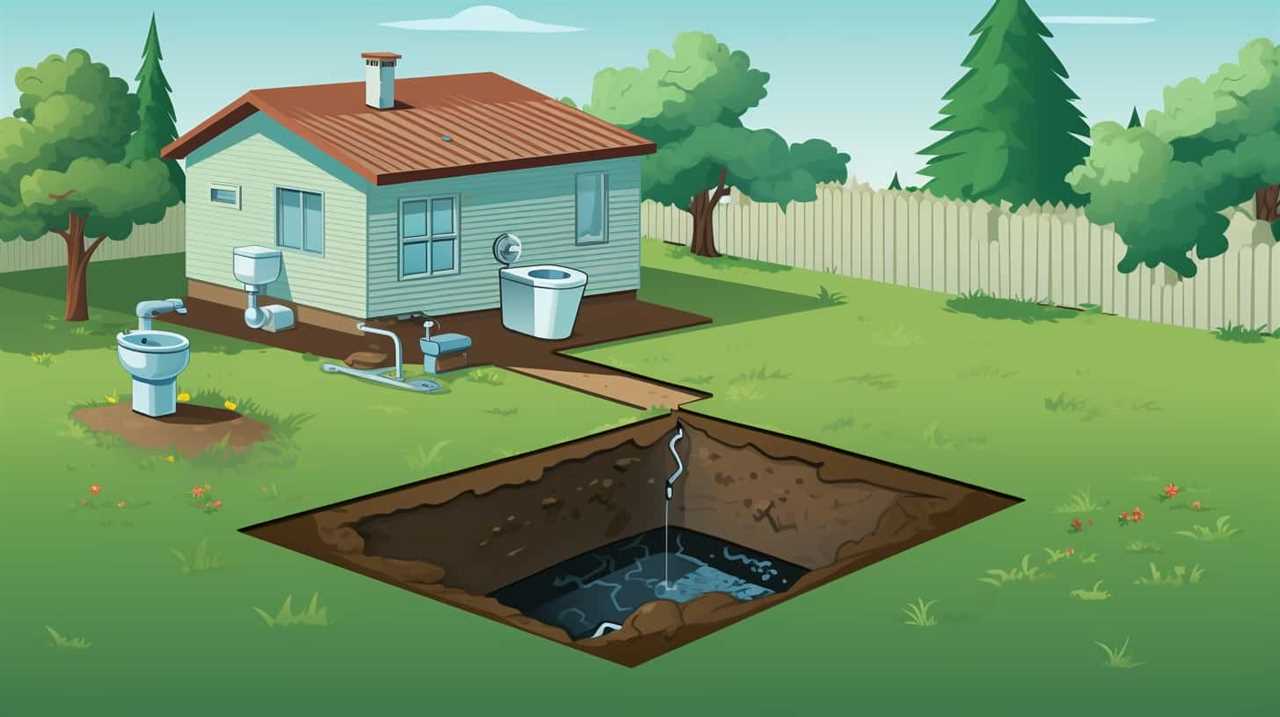
Are There Any Long-Term Solutions or Devices Available to Prevent Toilet Flushing Problems During Water Outages?
Long-term solutions and devices are available to prevent toilet flushing problems during water outages. These options ensure continued functionality by utilizing alternative water sources or implementing water-conserving technologies.
Conclusion
In conclusion, when faced with a water outage, fear not, for there are alternative methods to flush the toilet! Whether it’s using a trusty bucket of water or getting creative with a water-filled trash bag, you can still maintain your bathroom dignity.
And in dire emergencies, well, let’s just say you might’ve to get a little creative. Just remember, where there’s a will, there’s a way to keep the flush flowing!
With an impeccable eye for detail and a passion for bathroom-related, Ava leads our editorial team gracefully and precisely.
Under her guidance, Best Modern Toilet has flourished as the go-to resource for modern bathroom enthusiasts. In her free time, you might find Ava exploring antique shops and looking for vintage bathroom fixtures to add to her collection.
Guides
What Can I Use to Clean My Toilet if I Have a Septic Tank

If you have a septic tank, it is important to be cautious about the products used to clean your toilets. Using the wrong cleaning agents can disrupt the sensitive balance of our septic system.
So, what can we use to clean our toilets safely? In this article, we’ll explore natural cleaning agents, DIY solutions, and septic-safe toilet bowl cleaners.
We’ll also discuss the effectiveness of vinegar and baking soda, as well as enzyme-based toilet cleaners.
Let’s dive in and discover the best options for maintaining a healthy septic tank and sparkling clean toilet.
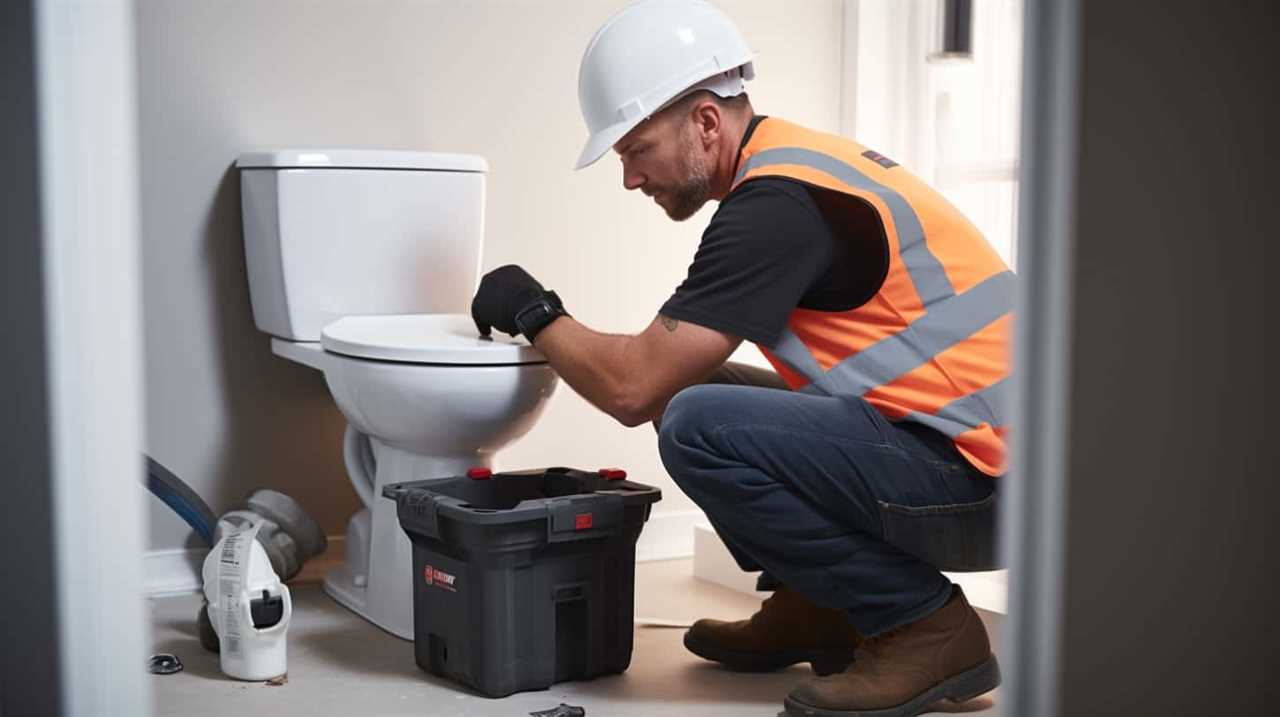
Key Takeaways
- Essential oils, such as tea tree oil, lavender oil, and eucalyptus oil, have antimicrobial properties and can be used to clean toilets without harming the septic tank.
- Citrus-based toilet cleaners derived from lemon or orange are effective at removing stains and leaving a fresh scent, while also being safe for septic tanks.
- Vinegar and baking soda can be combined to create a powerful cleaning paste that removes odors and stains without damaging the septic system.
- Enzyme-based toilet cleaners are a septic-safe option that effectively clean toilets and eliminate bacteria by utilizing naturally occurring enzymes.
Natural Cleaning Agents
We can use natural cleaning agents to effectively clean our toilets when we’ve a septic tank. One option is to use essential oils for toilet cleaning. These oils, such as tea tree oil, lavender oil, or eucalyptus oil, have antimicrobial properties that can help eliminate bacteria and odors. They can be diluted with water and applied to the toilet bowl using a brush or spray bottle.
Another option is to use citrus-based toilet cleaners. These cleaners are made with natural ingredients derived from citrus fruits, such as lemon or orange. They’re effective in removing stains and leaving a fresh citrus scent.
When using natural cleaning agents, it’s important to avoid harsh chemicals that can harm the delicate balance of bacteria in the septic tank. By choosing natural alternatives, we can clean our toilets effectively while maintaining the health of our septic systems.
DIY Cleaning Solutions
To continue our discussion on cleaning toilets with a septic tank, let’s explore some DIY cleaning solutions that are both effective and septic-safe.
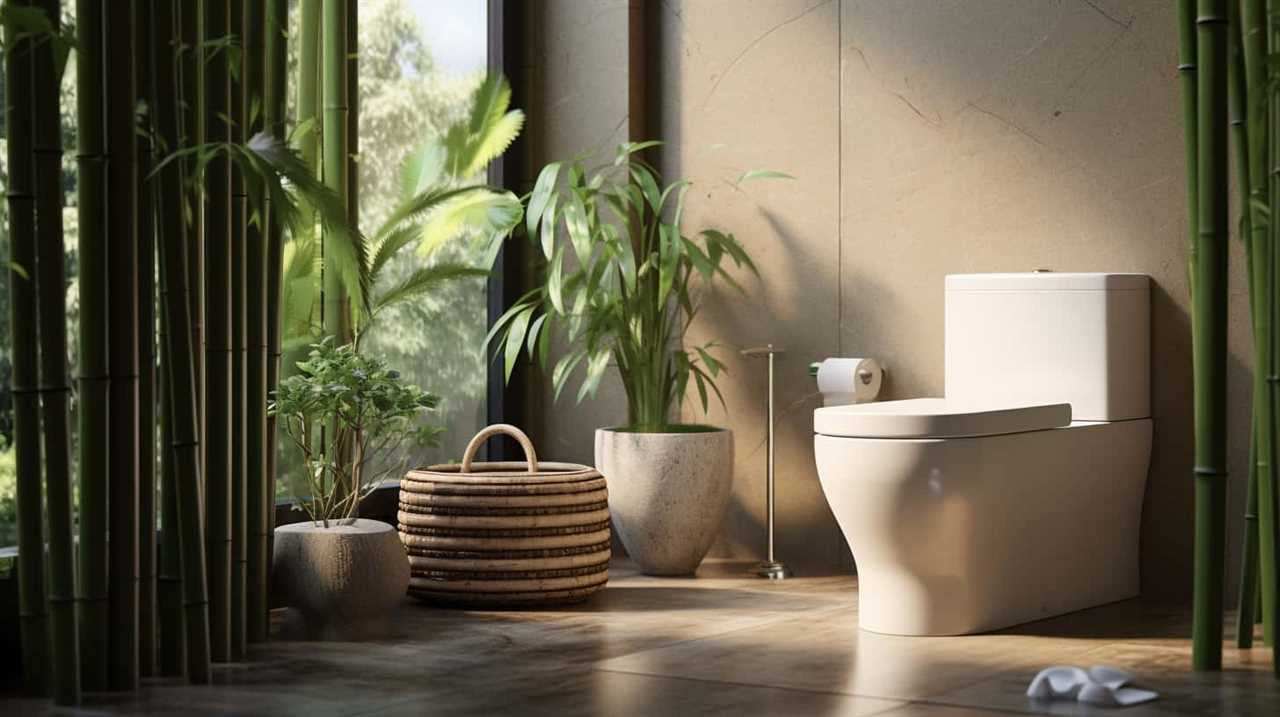
When it comes to homemade toilet cleaners, there are several eco-friendly options available that can get the job done without harming your septic system. Here are three recommended solutions:
- Vinegar and Baking Soda: Mix equal parts vinegar and baking soda to create a powerful cleaning paste. Apply this mixture to the inside of your toilet bowl and let it sit for a few minutes before scrubbing with a toilet brush. The vinegar’s acidity helps remove stains and odors, while the baking soda acts as a gentle abrasive.
- Lemon Juice and Borax: Combine freshly squeezed lemon juice with a small amount of borax to create a natural toilet cleaner. The acidic properties of the lemon juice help dissolve mineral deposits, while the borax acts as a disinfectant. Scrub the mixture onto the toilet bowl surface and let it sit for a few minutes before rinsing with water.
- Hydrogen Peroxide and Essential Oils: Mix hydrogen peroxide with a few drops of your favorite essential oil, such as tea tree oil or lavender oil. This solution provides a powerful disinfectant and leaves a pleasant scent behind. Apply the mixture to the toilet bowl, let it sit for a few minutes, and then scrub away any stains or residue.
These homemade toilet cleaners aren’t only effective but also safe for your septic tank. By using eco-friendly cleaning products, you can maintain a clean and hygienic toilet without compromising the health of your septic system.
Septic-Safe Toilet Bowl Cleaners
Using septic-safe toilet bowl cleaners is essential for maintaining the health and functionality of your septic tank. These cleaners are specifically designed to be eco-friendly alternatives that don’t harm the delicate balance of bacteria in your septic system.
The benefits of septic safe cleaners are numerous. Firstly, they don’t contain harmful chemicals that can disrupt the natural bacteria in the tank, allowing it to function properly. Secondly, they’re gentle on the pipes and plumbing, preventing any damage or clogs that can occur with harsh chemicals. Lastly, septic-safe cleaners are biodegradable, reducing the environmental impact and ensuring the long-term sustainability of your septic system.
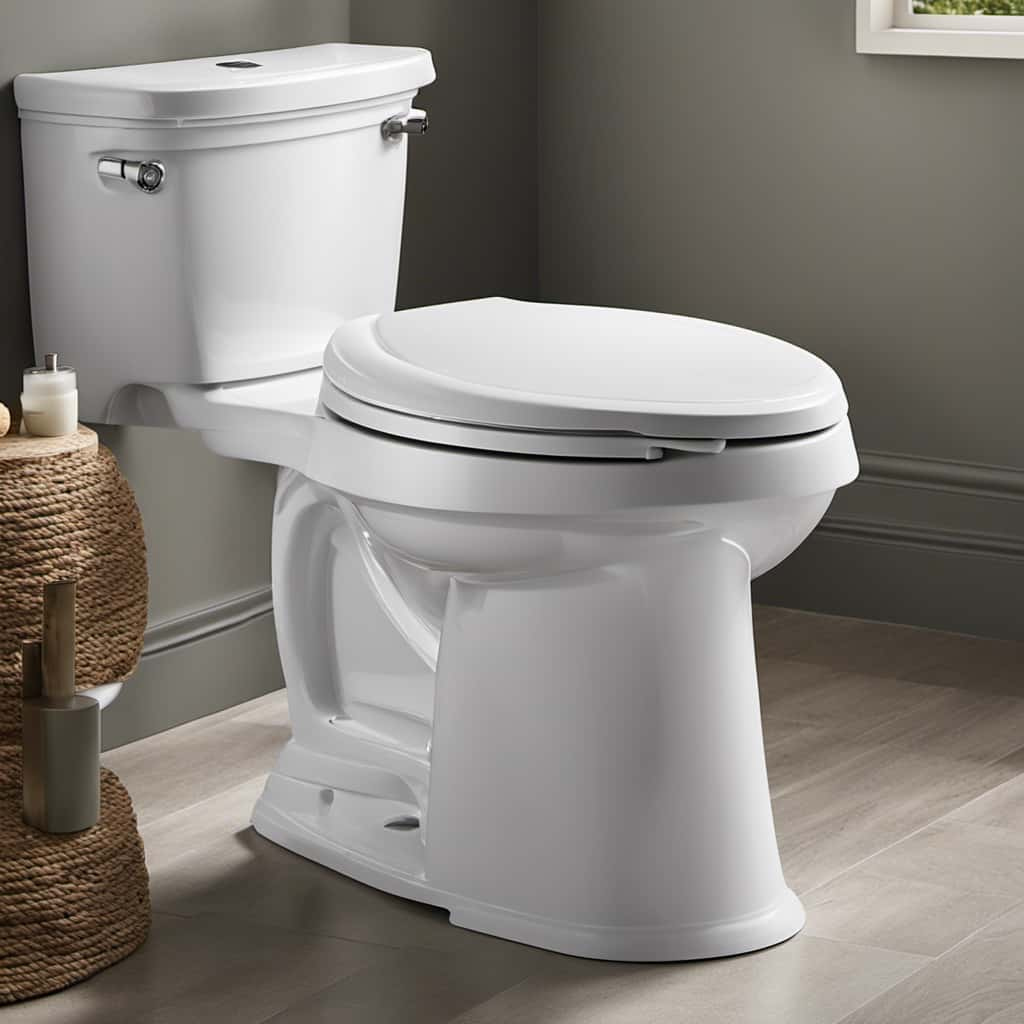
Now, let’s move on to another effective cleaning method using vinegar and baking soda.
Vinegar and Baking Soda
Continuing with our discussion on septic-safe toilet bowl cleaners, let’s explore the effectiveness of cleaning your toilet with vinegar and baking soda. These cleaning hacks aren’t only eco-friendly options, but they also provide excellent results.
Here’s why:
- Vinegar: Vinegar is a natural disinfectant that can effectively kill bacteria and germs in your toilet bowl. Its acidic properties help remove stains and mineral deposits, leaving your toilet clean and fresh.
- Baking Soda: Baking soda is a gentle yet powerful cleaner that can effectively remove odors and stains. It also helps to scrub away grime and buildup without damaging your septic system.
- Combination: When vinegar and baking soda are combined, they create a powerful cleaning solution. The fizzing action helps to break down tough stains and loosen dirt, making it easier to scrub away.
Using vinegar and baking soda as toilet cleaners isn’t only a great way to maintain a clean and fresh toilet but also a sustainable and eco-friendly choice.
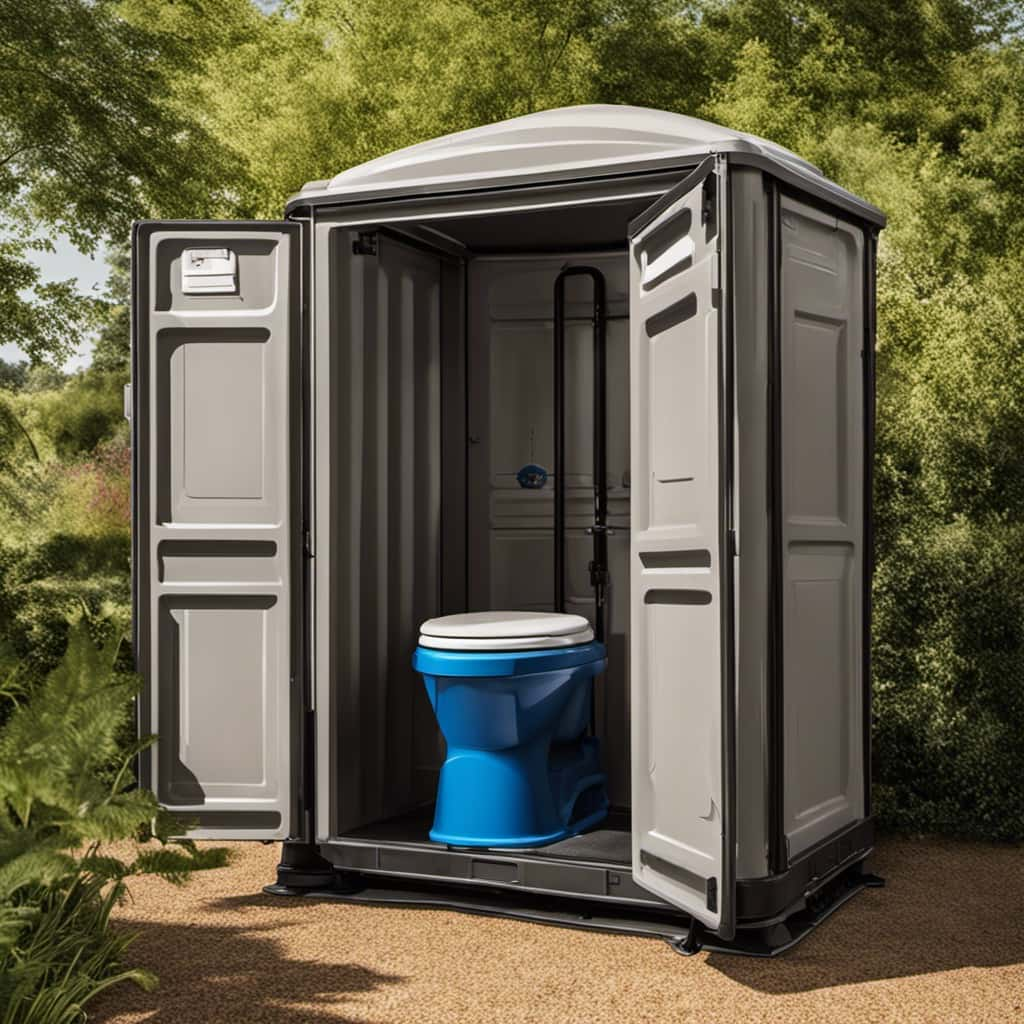
Enzyme-Based Toilet Cleaners
We have found that enzyme-based toilet cleaners are an effective and septic-safe option for keeping your toilet clean and free of bacteria. Enzyme based cleaners utilize naturally occurring enzymes that break down organic waste, eliminating odors and preventing clogs in your septic tank. These cleaners have several benefits compared to traditional chemical cleaners. Firstly, they are environmentally friendly, as they do not contain harsh chemicals that can harm the delicate balance of your septic system. Secondly, they are highly effective in breaking down organic matter, ensuring a thorough cleaning of your toilet bowl. Lastly, enzyme-based cleaners help to maintain the overall health of your septic tank by promoting the growth of beneficial bacteria that aid in the digestion of waste.
| Benefits of Enzyme-Based Cleaners |
|---|
| Environmentally friendly |
| Effective in breaking down waste |
| Promotes beneficial bacteria |
Frequently Asked Questions
Can I Use Bleach to Clean My Toilet if I Have a Septic Tank?
We can use alternatives to bleach for cleaning a toilet if we have a septic tank. Natural toilet cleaning options are effective and safe for the septic system, ensuring its proper functioning.
Are There Any Specific Precautions I Should Take When Using Vinegar and Baking Soda to Clean My Toilet With a Septic Tank?
When using vinegar and baking soda to clean a toilet with a septic tank, it’s important to take precautions. Alternatives include using septic-safe toilet cleaners or natural products like lemon juice and borax.
How Often Should I Clean My Toilet if I Have a Septic Tank?
To maintain optimal septic tank health, it is recommended that toilets be cleaned regularly. The frequency of cleaning depends on individual usage, but a general guideline is to clean the toilet at least once a week using septic-safe cleaning products.
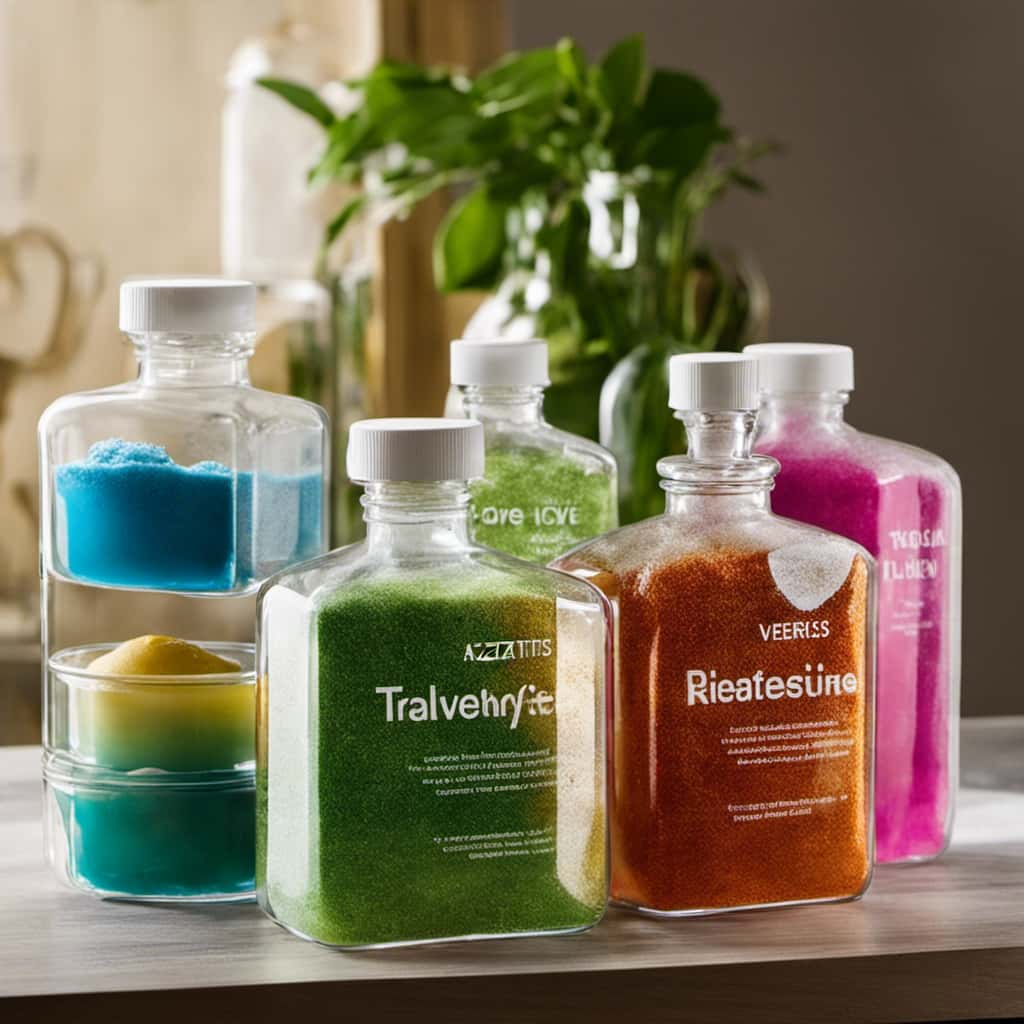
Can I Use Commercial Toilet Bowl Cleaners if They Claim to Be Septic-Safe?
Yes, you can use commercial toilet bowl cleaners that claim to be septic-safe. However, it is advisable to consider using bleach alternatives or natural toilet cleaners to minimize any potential harm to your septic tank.
Are Enzyme-Based Toilet Cleaners Effective in Eliminating Tough Stains in the Toilet Bowl?
Enzyme-based toilet cleaners have shown effectiveness in eliminating tough stains. However, it’s important to consider alternative cleaning methods that are septic-safe. Experimenting with different products will help find the most suitable solution for your toilet and septic tank.
Conclusion
In conclusion, when it comes to cleaning your toilet while having a septic tank, it’s important to use natural cleaning agents, DIY solutions, or septic-safe toilet bowl cleaners.
One effective method is using a mixture of vinegar and baking soda, which not only cleans but also eliminates odors.

Another option is enzyme-based toilet cleaners, which break down waste and maintain the balance in your septic system.
Remember, it’s crucial to choose cleaning products that are safe for your septic tank to avoid any potential damage or disruption.
With an impeccable eye for detail and a passion for bathroom-related, Ava leads our editorial team gracefully and precisely.
Under her guidance, Best Modern Toilet has flourished as the go-to resource for modern bathroom enthusiasts. In her free time, you might find Ava exploring antique shops and looking for vintage bathroom fixtures to add to her collection.
Guides
How Far Back Does a 10 Panel Urine Test Go

We have all questioned how long ago a 10-panel urine test can detect drug use. The answer might be unexpected.
In this article, we’ll delve into the fascinating world of 10 panel urine tests and explore their detection window.
From cocaine to marijuana, we’ll reveal the drugs that can be detected and discuss the factors that can affect the accuracy of these tests.
Get ready to master the knowledge behind 10 panel urine tests.

Key Takeaways
- The detection window of a 10 panel urine test varies depending on the specific drug being tested.
- Marijuana (THC) can be detected for 3-30 days, depending on the frequency of use.
- Cocaine can be detected for 2-4 days, while opiates can be detected for 2-3 days.
- Benzodiazepines can be detected for 2-10 days.
What Is a 10 Panel Urine Test
A 10 panel urine test is a screening method that detects the presence of various substances in a person’s urine. This test is commonly used in drug testing programs and is designed to identify multiple drugs of abuse.
The benefits of a 10 panel urine test are its ability to detect a wide range of substances, including marijuana, cocaine, opioids, amphetamines, and benzodiazepines. This comprehensive screening can provide valuable information about an individual’s drug use history.
However, it’s important to note that there are limitations to this test. It can only detect recent drug use within a certain timeframe and may not detect substances that have been metabolized or eliminated from the body. Additionally, false positives or false negatives can occur due to various factors.
Despite these limitations, a 10 panel urine test remains a valuable tool in drug testing programs.

How Does a 10 Panel Urine Test Work
To understand how a 10 panel urine test works, let’s delve into the process of detecting the presence of various substances in a person’s urine.
This test is administered by collecting a urine sample from the individual and analyzing it for the presence of specific drugs or their metabolites. The urine sample is divided into multiple smaller aliquots, each of which is tested for a different substance.
The results are then compared to established cutoff levels to determine whether the tested substances are present in the urine. It’s important to note that a 10 panel urine test has its limitations.
While it can detect recent drug use, it may not be able to detect drugs that were used more than a few days ago. Additionally, the test may produce false positive or false negative results. Nevertheless, it remains a valuable tool in screening for common drugs of abuse.

Now, let’s explore the drugs that can be detected by a 10 panel urine test.
Drugs Detected by a 10 Panel Urine Test
Now, let’s delve into the specific drugs that a 10 panel urine test can detect.
There are common misconceptions about the drugs that can be detected by a 10 panel urine test. Some people may mistakenly believe that the test only detects commonly abused drugs such as marijuana, cocaine, and opioids. However, a 10 panel urine test is designed to detect a wider range of drugs, including amphetamines, barbiturates, benzodiazepines, methadone, methamphetamine, phencyclidine (PCP), propoxyphene, and tricyclic antidepressants.
It’s important to note that new developments in drug testing technologies for urine samples have made it possible to detect even smaller quantities of these drugs, increasing the accuracy and reliability of the test results.

Understanding the drugs that can be detected by a 10 panel urine test is crucial for individuals undergoing drug testing.
In the next section, we’ll explore the detection window of a 10 panel urine test.
The Detection Window of a 10 Panel Urine Test
The detection window of a 10 panel urine test depends on the specific drug being tested. Here are the detection times for some commonly screened substances:
- Marijuana (THC): 3-30 days, depending on frequency of use
- Cocaine: 2-4 days
- Opiates (such as heroin, morphine, and codeine): 2-3 days
- Benzodiazepines (such as Xanax and Valium): 2-10 days
It’s important to note that these detection times are approximate and can vary depending on factors such as metabolism, hydration levels, and individual differences.

Additionally, some drugs may be detectable for longer periods in heavy or chronic users.
The detection window for a 10 panel urine test provides valuable information about recent drug use, allowing for effective screening and monitoring.
Factors That Can Affect the Accuracy of a 10 Panel Urine Test
Factors affecting the accuracy of a 10 panel urine test include hydration levels, metabolism, and individual differences.
Hydration levels can impact the concentration of substances in the urine, potentially affecting the test results. It’s important to properly collect the urine sample to ensure accuracy.
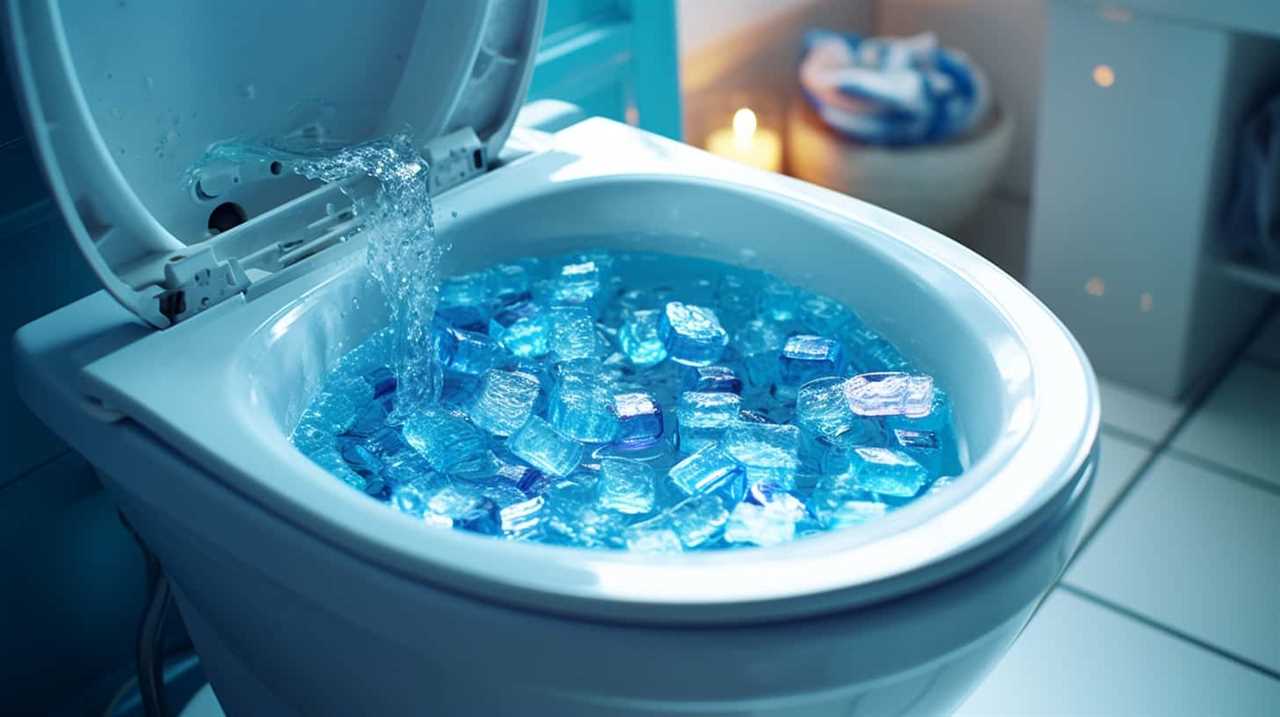
Metabolism also plays a role in the accuracy of the test, as it can affect how quickly the body processes and eliminates substances.
Additionally, individual differences, such as genetic variations and overall health, can impact the accuracy of the test. Proper sample collection is crucial to obtain reliable results.
It’s important to follow the instructions provided for sample collection, including the timing and handling of the sample. Taking these factors into consideration can help ensure the accuracy of a 10 panel urine test.
Frequently Asked Questions
How Long Does It Take to Get the Results of a 10 Panel Urine Test?
It usually takes a few days to get the results of a 10 panel urine test. Factors like lab workload and testing method can affect the timing. Accuracy can be impacted by certain medications and substances.
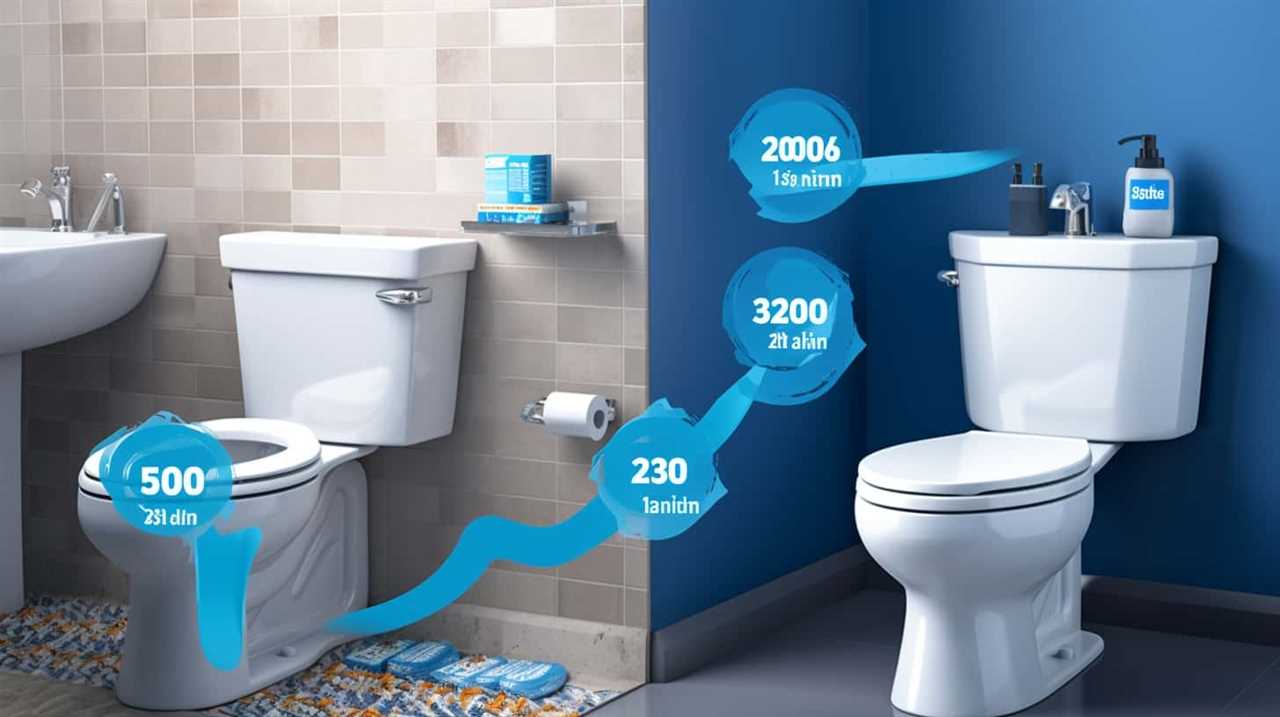
Can a 10 Panel Urine Test Detect Alcohol?
Yes, a 10 panel urine test can detect alcohol. It can also detect marijuana and cocaine. We were curious about how far back the test goes, but let’s focus on what it can detect first.
Is It Possible for a 10 Panel Urine Test to Show a False Positive Result?
Yes, it is possible for a 10 panel urine test to show a false positive result. However, the accuracy of the test and the false positive rates can vary depending on various factors such as the specific substances being tested for.
Are Prescription Medications Included in the Drugs Detected by a 10 Panel Urine Test?
Prescription medications are included in the drugs detected by a 10-panel urine test. The accuracy of drug testing depends on various factors. It’s important to consult a healthcare professional for more information on prescription medication detection and testing accuracy.
Can a 10 Panel Urine Test Determine the Frequency or Amount of Drug Use?
A 10 panel urine test is unable to determine the frequency or amount of drug use. However, it can detect the presence of drugs within a certain window of time, typically up to 72 hours.
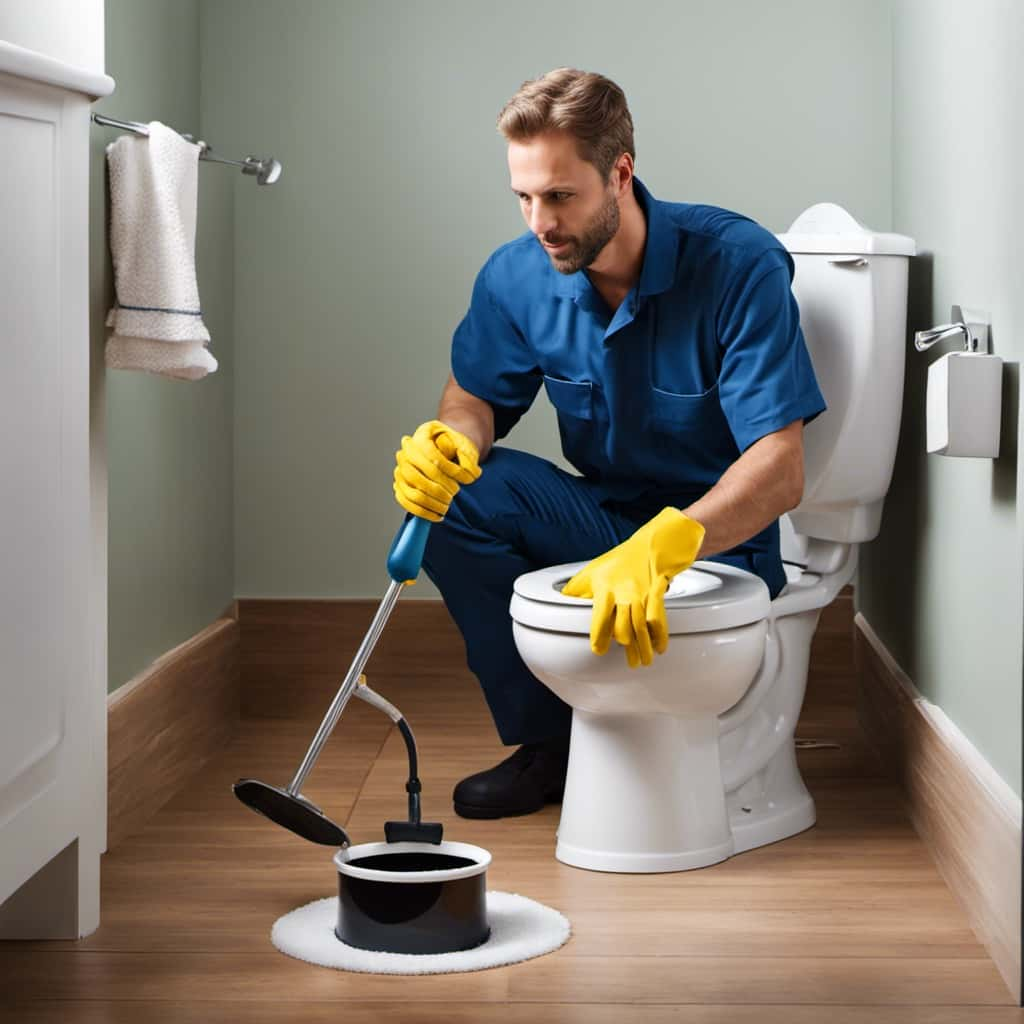
Conclusion
In conclusion, a 10 panel urine test can detect a wide range of drugs, offering valuable information about a person’s recent drug use. The detection window for this test typically goes back about 1-3 days, depending on the drug. However, various factors can influence the accuracy of the test results.
So, are you curious about what a 10 panel urine test can reveal about your own drug use?
With an impeccable eye for detail and a passion for bathroom-related, Ava leads our editorial team gracefully and precisely.
Under her guidance, Best Modern Toilet has flourished as the go-to resource for modern bathroom enthusiasts. In her free time, you might find Ava exploring antique shops and looking for vintage bathroom fixtures to add to her collection.
-

 FAQ - Advanced Bathroom Queries3 months ago
FAQ - Advanced Bathroom Queries3 months agoWhat Happens if You Sit on the Toilet Too Long
-

 FAQ - Advanced Bathroom Queries3 months ago
FAQ - Advanced Bathroom Queries3 months agoWhy Is My Toilet so Loud When Refilling
-

 Guides3 months ago
Guides3 months agoTroubleshooting Dropping Water Level in Toilet Bowl: Causes and Solutions
-

 Toilet Brands3 months ago
Toilet Brands3 months agoCountries Where You Can’t Flush Toilet Paper
-

 Guides3 months ago
Guides3 months agoChoosing the Right Toilet Flange: A Comprehensive Guide
-

 Guides3 months ago
Guides3 months agoToilet Water Supply Line Sizes: Finding the Right Fit
-

 FAQ - Advanced Bathroom Queries3 months ago
FAQ - Advanced Bathroom Queries3 months agoWhat Happens When You Put Baking Soda in Your Toilet
-

 Guides2 months ago
Guides2 months agoHow to Remove Crystallized Urine From Toilet Bowl






















